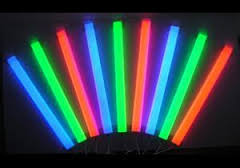We cannot create nor destroy energy, but only transform it. This means that we cannot get from a power source more than it provides.
We have explained this when we showed that if we connect a battery to a transformer supplying 1.5 V x 1 A = 1.5 W, by raising the voltage to 150 V the current will be only 0.01 A, as the 1.5 W (energy) given by 150 x 0.01 remains.
However, despite these applications many of our readers insist on wanting to get energy where it is not available, trying to create new energy sources or new fuels which lead us to cheap and infinite energy.
In the case of electrical energy conversions we have already addressed the issue in our Electronics Course - Basic Electronics, but did not address the subject on other sources, for example, the chemical energy sources.
Chemical Energy
The main energy we use in our daily basis is the chemical energy, the energy released in a chemical reaction.
When chemical bonds between atoms of a substance is broken there can occur either the release or the absorption of energy. There are exothermic chemical reactions which release energy (usually in the form of heat) or endothermic reactions, which absorb energy.
For example, the reaction of water decomposition into hydrogen and oxygen is an endothermic reaction in the sense that, for it to occur, we have to deliver energy to the chemical bonds between the hydrogen and oxygen atoms in order to break them up.
On the other hand, when hydrogen reacts with oxygen there is a burning, energy is released.
It is for this reason that hydrogen is a fuel and can provide power, but water is not. It needs energy to react.
In the vaunted process by many who say they use water as fuel, it is actually not what happens. The water enters the process, either as solvent or other purpose, but it is not supplying power, and therefore it is not the fuel. Beware the deceit that we see on the internet, especially on YouTube.
The substances normally used as fuel is the sun that provides the energy they store in most cases.
It is the case of oil formed by substances (hydrocarbons) that were part of living organisms and stored solar energy (photosynthesis) for millions of years. Now we burn these substances, releasing the stored energy.
It is the same with us when we use food. The decomposition of food releases the energy we need to live.
This energy, actually, comes from the sun which provided the energy to be stored in the vegetables we eat, or the load which is from the vegetables that animals ate...
So when we think of taking advantage from a chemical energy source in a project to convert it into electricity, like we do with the batteries, we need to be aware if the target source can or cannot supply power.
A battery will not work with water, however, it can work with a substance that has the ability to enter an exothermic reaction.
The energy released, like in the case of a battery in which the most common reaction is between the electrolyte and a metal, can then be utilized. In this case we have electricity, but nothing prevents to create processes that lead to other forms of energy as the emission of light, heat, etc.
An example of light energy conversion is the colored ribbons, used at parties that emit light for a certain time from the substance reaction inside them.
As soon as the substance is worn out the reaction stops and the ribbon goes off...

If you are trying to get energy from alternative sources, first make sure if the substance you want to use has energy to provide.
If the reactions that it takes part are endothermic, stop. You will not be able to get the energy you needs, as it has no power to provide. Analyze it very well.




